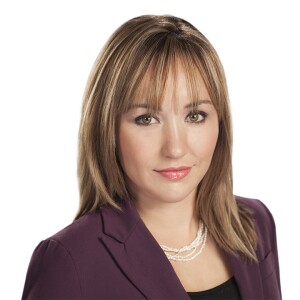DETROIT (WXYZ) — Fake news. It leads to confusion and makes it hard for people to share a common reality.
It is a phrase that has been yelled at legitimate reporters. It has been used as a weapon against our country. It has even put a WXYZ-TV crew member in the middle of a fabricated election fraud scandal.
The fabricated scandal started with a video that has now been seen by millions of people around the globe. It shows a man wheeling a wagon with a suitcase into the TCF Center in Detroit after the election.
The Texas Scorecard website posted the video, saying it was recorded by Kellye SoRelle, a Texas lawyer and member of Lawyers for Trump.
“Where’d this guy come from in the middle of the night?” a voice asks in the video.
When Conservative YouTuber Steven Crowder interviewed her, SoRelle insinuated the video showed a man smuggling ballots long after all ballots should have arrived at TCF Center.
“I get in the car and I see him drop the box. And we had worked polling stations for the night. And it was similar to boxes we had seen and been watching and monitoring,” said Sorelle in the interview.
“If the lady would have just rolled down the window and said, hey, what is in the box, I would have told her it is batteries,” said Veteran WXYZ photojournalist Josh Bowren.
Bowren soon found himself the subject of a viral fake news story. He was shocked that just by innocently bringing in fresh camera batteries, he found himself attacked.
WXYZ quickly worked to raise awareness of the disinformation, reporting on it and contacting some of the first to share it. The video remains all over the internet. Even Eric Trump shared the video.
“It was very sad to me. It was very sad that someone in such high place and high power just loosely reposted that,” said Bowren.
“We should all feel a responsibility to share accurate and fact-based information,” said Jennifer Kavanagh, a senior political scientist at the RAND Corporation and one of the authors of Truth Decay: An Initial Exploration of the Diminishing Role of Facts and Analysis in American Public Life.
Truth Decay takes a look at how people need facts to make the best choices for themselves and their country. At the same time, a blurring of the lines between opinions, interpretations, and facts are leading to disagreement over facts.
Truth Decay defines fake news as newspaper articles, televisions news shows, or other information disseminated through broadcast or social media that are intentionally based on falsehoods or that intentionally use misleading framing to offer distorted information disseminated through broadcast or social media that are intentionally based on falsehoods or that intentionally use misleading framing to offer a distorted narrative.
A definition helps make a conversation possible, but we know that a 2017 Gallup/Knight Foundation Survey on Trust, Media, and Democracy found “Fake News” means different things to different people.
Truth Decay defines other phrases that are important and empower people to constructively criticize information they see, such as misinformation, disinformation, and propaganda.
Like fake news, disinformation and propaganda are false or misleading information spread intentionally.
Misinformation is misleading information that is spread accidentally by error or mistake.
Truth Decay takes a look at how technology has increased access to data that allows us to determine facts exponentially. At the same time technology allows anyone to become a source of “news” information on their social media pages.
Data shows that social media helps spread fake news and disinformation in some ways at a greater rate than real information. Truth Decay shared how “fake-news” sites get about four times as much of their traffic from social media, relative to “real-news” sites.
“I think it is important to approach everything with a skeptical mind. You want to be convinced. But not cynical. There are certainly actors who are trying to mislead us and divide us but there are also people who are trying to give us good information,” said Kavanagh.
So how do you fight fake news?
- Seek out journalists with a record of trustworthiness. Share their work.
- If something sparks a strong emotion in you, fact check it.
- If you are unsure or know something is not true, don’t share it on your social media page.
“We are all given a platform and that comes with responsibility. We have to think about what you are sharing,” said Kavanagh.





